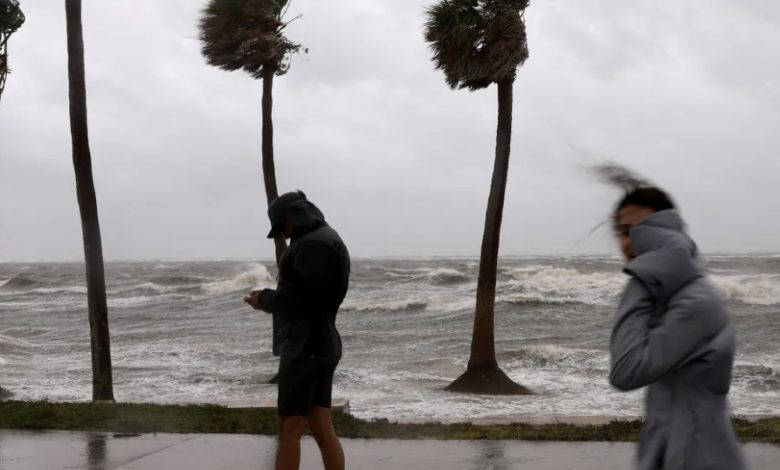
They have recommended that everyone in a household is familiar with the hurricane plans they’ve made. This may include catering for those at work, children’s daycare, and other frequently visited locations such as grocery stores.
Additionally, the government suggests that households should stock adequate supplies. Some recommended items are medications, disinfectants, and pet supplies that are carried in the go-bag or car trunk. Access to these supplies may be limited for days or even weeks after a hurricane.
Households also need to clear drains and gutters, secure outdoor furniture, and consider installing hurricane shutters. It is highly valuable to charge a cell phone and invest in backup charging devices for electronics when a hurricane is forecasted.
2. Stay Informed
In this step, it’s crucial for households to know if they live in an evacuation zone, listed at the end of this article, as they may need to evacuate quickly due to a hurricane. They should familiarize themselves with evacuation routes. They can also practice evacuating with their household and pets, and determine where they will stay.
Households should follow the guidance of local emergency managers, who collaborate with state, local, tribal, and territorial agencies. They will provide up-to-date recommendations based on the specific threats to your community and the necessary safety measures.
3. Check On Your Neighbors
Reach out to your neighbors, especially seniors or those who may require extra assistance, to ensure they have adequate hurricane plans in place. Offer your help in securing their preparations and provide support wherever needed.
4. Stay Out of Flood Water
Households should avoid entering floodwaters, as even six inches of fast-moving water can knock people off their feet. They should prioritize their safety and steer clear of any flooded areas.
5. Turn Around and Do Not Drown
People should be aware that just one foot of moving water can easily sweep away a vehicle. They should stay vigilant and avoid driving through flooded areas. Avoid walking, swimming, or driving through flood waters at all times. When encountering such a scenario, they should turn around.
6. Take Care of Your Mental Health
Lastly, individuals should prioritize their mental health during and after a hurricane. It’s important to acknowledge any feelings of anxiety or stress and seek support if needed. Connect with friends, family, or mental health professionals to discuss your concerns and find coping strategies.
Tampa Mayor Jane Castor has emphasized the need for households to pay attention to the evacuation zones as Hurricane Milton approaches Florida’s west coast. She warned the residents, “I can say without any dramatization whatsoever: If you choose to stay in one of those evacuation areas, you’re gonna die.”
Tampa is located in Hillsborough County. The region has listed compulsory evacuation orders for those in Zones A and B, as well as those who live in mobile homes. Tampa has urged residents of these areas to evacuate as Hurricane Milton is “literally catastrophic.”
Evacuation Zones
Charlotte County: It has issued a mandatory evacuation order for residents in Red Zone-A and Orange Zone-B, including those living in mobile and manufactured homes.
Citrus County: It has given a mandatory evacuation order that began on October 8, 2024, for all residents living in campers, tents, mobile homes, manufactured homes, or any structures unable to withstand sustained winds of up to 110 MPH.
Collier County: A voluntary precautionary evacuation is effective immediately for all residents in Collier County in Zones A and B. This includes west of Airport Pulling Road and south of US-41 Tamiami Trail E.
The order covers mobile home residents and areas with a history of storm flooding. A mandatory evacuation for all of Zones A and B began on October 8, 2024.
DeSoto County: It has issued evacuation orders for Zones A (Red) and B (Orange). These areas affect all residents living in mobile and manufactured homes, as well as those in low-lying or flood-prone areas.
Clay County: Currently, there are no mandatory evacuation orders, but residents in low-lying or flood-prone areas, especially along Black Creek or the St. Johns River, are strongly encouraged to consider relocating for safety.
Hardee County: On October 7, 2024, Hardee County Emergency Management advised residents in low-lying areas, mobile homes, recreational vehicles, and unsafe structures to evacuate as soon as possible.
Glades County: This county has implemented a voluntary evacuation for mobile homes, RV parks, and low-lying areas, which started on October 8, 2024.
Hillsborough County: This county has announced a mandatory evacuation for Evacuation Zones A and B, including all mobile homes and manufactured housing throughout the county, which started on October 7, 2024.
Hernando County: Mandatory evacuation orders for all areas west of US 19, including evacuation zones A, B, and C began on October 8, 2024. This includes all residents in coastal and low-lying areas, as well as those in manufactured homes countywide.
Levy County: A mandatory evacuation is in effect affecting all mobile homes, manufactured homes, recreational vehicle parks, coastal communities, and low-lying areas west of US 19. Hurricane risk shelters have opened at Bronson Elementary for special needs and Bronson Middle High School for general population/pet-friendly evacuations.
Lee County: It has issued mandatory evacuation orders for Zones A and B, urging residents to finalize emergency plans and evacuate as soon as possible. They should aim to be in a safe location by the evening of October 8, 2024.
Manatee County: This county has issued a mandatory evacuation for all residents in Levels A, B, and C, including visitors in RVs or mobile homes, effective October 7, 2024.
Marion County: The Marion County Sheriff’s Office Emergency Management officials have recommended evacuation for residents living in mobile homes, RVs, modular-type homes, and site-built homes constructed before 1994 due to the hurricane’s projected path.
Miami-Dade County: This county has announced a voluntary evacuation center for residents of mobile home parks, opening the E. Darwin Fuchs Pavilion on October 8, 2024, as a pet-friendly evacuation option.
Okeechobee County: A voluntary evacuation has been issued for all low-lying areas and mobile homes starting October 8, 2024.
Pasco County: This county has mandated evacuations for Zone C as the hurricane approaches. Evacuations are required for those in Zones A, B, or C, as well as residents in manufactured homes, RVs, low-lying areas, or structures prone to flooding.
Volusia County: A mandatory evacuation order took effect on October 9, 2024, for all areas east of the Intracoastal Waterway, including residents in manufactured and mobile homes, low-lying and flood-prone areas, as well as campsites and RV parks.
Sumter County: Residents in mobile homes, low-lying areas, or with special needs are strongly urged to consider evacuation or relocating to a shelter when they open.
Sarasota County: Residents in Sarasota County living in Level A or near Level A, as well as those in manufactured home communities or mobile/boat homes, are advised to implement their evacuation plans immediately, whether that involves staying with friends or leaving the area.
Pinellas County: Pinellas County has enacted a mandatory evacuation order for all residents in Zones A, B, and C, as well as all mobile homes. Special needs residents and residential healthcare facilities in these zones are also included in the evacuation order.
Putnam County: A recommended evacuation has been issued for Zones F and A due to concerns regarding high river levels.
Obeying the directives issued by local authorities and noting the evacuation zones ensures that families can evacuate safely and efficiently. This also allows emergency services to respond effectively to those in need.
Nós adotamos uma menina de 4 anos – Um mês depois, ela veio até mim e disse: ‘Mamãe, não confie no papai’

Um mês depois de adotar Jennifer, ela olhou para mim com os olhos arregalados e sussurrou: “Mamãe, não confie no papai”. Suas palavras ecoaram em minha mente enquanto comecei a me perguntar que segredos meu marido poderia estar escondendo.
Olhei para o rosto pequeno de Jennifer, observando aqueles olhos grandes e atentos e o sorriso tímido e incerto que ela tinha. Depois de todos aqueles anos de esperança, tentativa, espera, aqui estava ela, nossa filha.
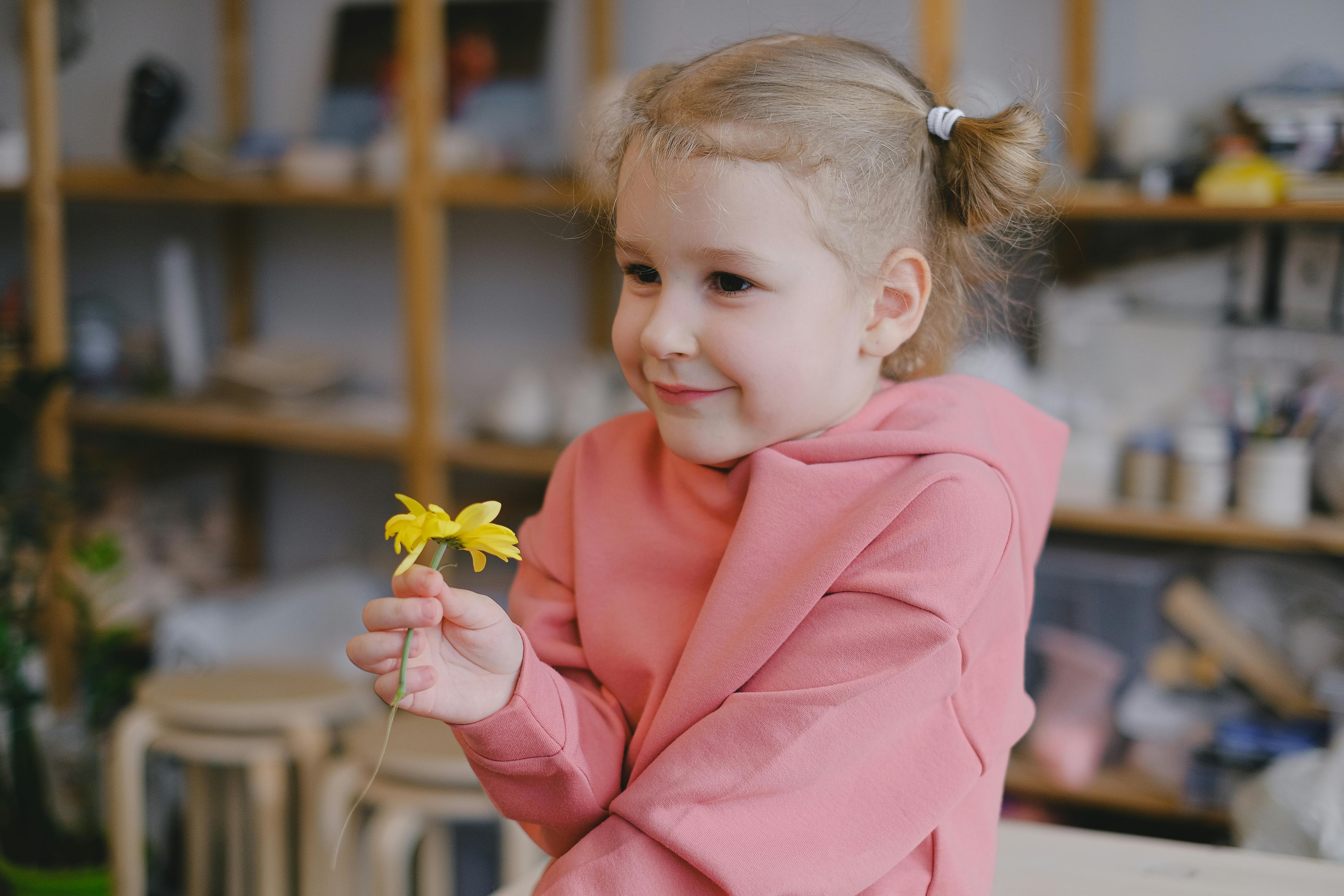
Uma pequena menina feliz | Fonte: Pexels
Richard estava praticamente brilhando. Ele não conseguia parar de olhar para ela, como se estivesse tentando memorizar cada característica, cada expressão.
“Olhe para ela, Marla”, ele sussurrou, sua voz cheia de admiração. “Ela é simplesmente perfeita.”
Dei-lhe um sorriso suave, minha mão descansando no ombro de Jennifer. “Ela realmente é.”

Uma família feliz e sua filha | Fonte: Pexels
Nós tínhamos percorrido um longo caminho para chegar aqui. Foram consultas médicas, longas conversas e uma papelada interminável de adoção. Quando finalmente conhecemos Jennifer, algo em mim simplesmente… sabia. Ela tinha apenas quatro anos, era tão pequena e tão quieta, mas já parecia nossa.
Já faz algumas semanas que adotamos Jen oficialmente, e decidimos que era hora de um pequeno passeio em família. Richard se abaixou até o nível dela, sorrindo calorosamente. “Ei. Que tal irmos tomar um sorvete? Você gostaria?”
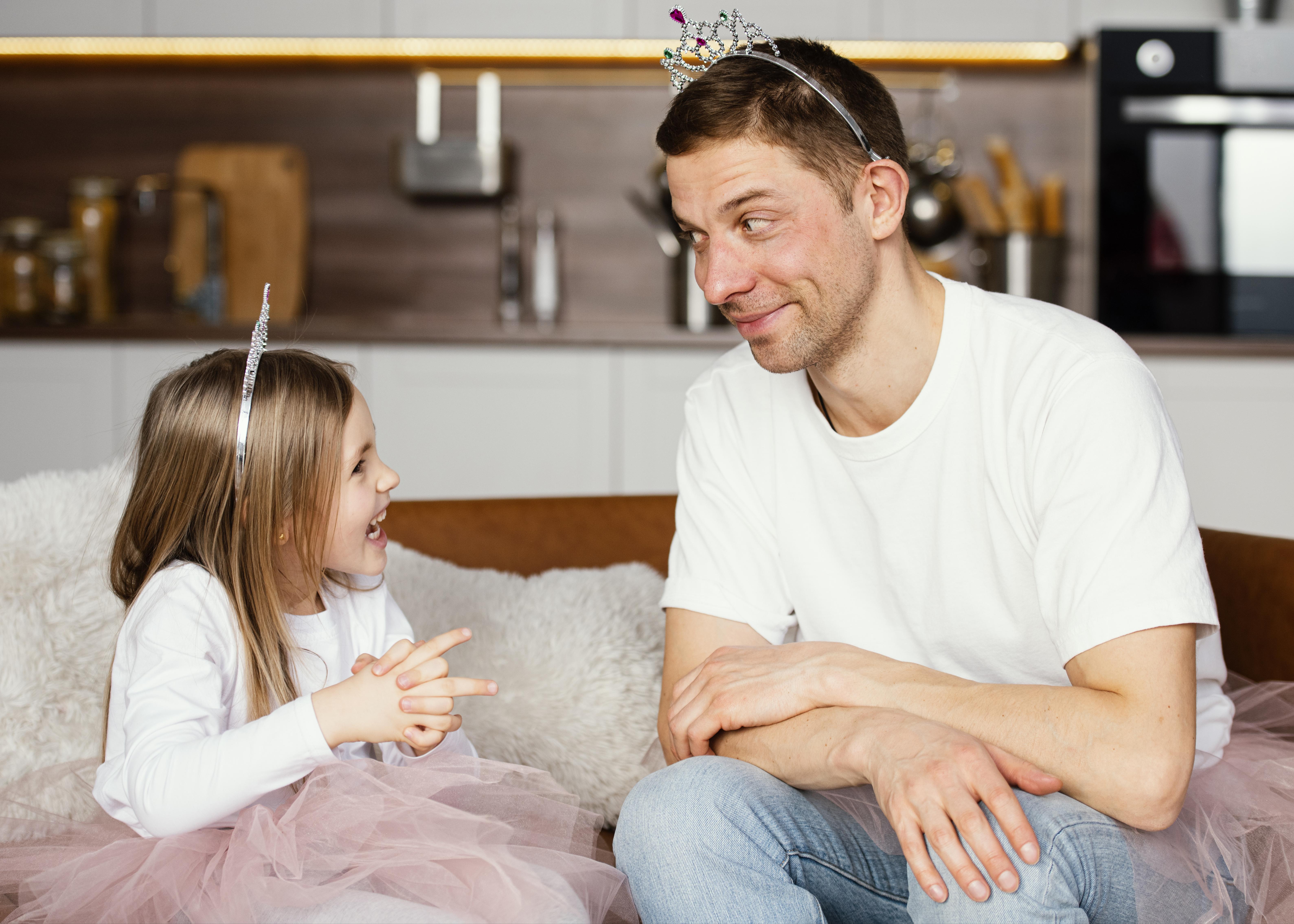
Um homem conversando com sua filha pequena | Fonte: Freepik
Jennifer olhou para ele, então olhou para mim, como se esperasse minha reação. Ela não respondeu imediatamente, apenas deu um pequeno aceno, pressionando-se mais perto do meu lado.
Richard riu baixinho, embora eu pudesse ouvir uma pitada de nervosismo nela. “Tudo bem, sorvete é isso. Vamos fazer um tratamento especial.”

Um homem brincando com sua filha | Fonte: Freepik
Jennifer ficou perto de mim enquanto saíamos. Richard liderou o caminho, olhando para trás de vez em quando e sorrindo esperançoso. Eu o observei tentar persuadi-la a sair, para fazê-la se sentir à vontade. Mas cada vez que ele fazia uma pergunta, o aperto de Jennifer em minha mão ficava um pouco mais forte, seu olhar se voltando para mim.
Quando chegamos à sorveteria, Richard foi até o balcão, pronto para pedir para ela. “Que tal chocolate? Ou talvez morango?”, ele perguntou, sua voz animada.

Um homem escolhendo sorvete | Fonte: Midjourney
Ela olhou para ele, depois olhou para mim novamente, sua voz quase um sussurro. “Vanilla, por favor.”
Richard pareceu surpreso por apenas um segundo, então sorriu. “Vanilla então.”
Jennifer parecia contente em deixá-lo pedir, mas notei que ela mal olhou para ele quando nos sentamos. Em vez disso, ela comeu em silêncio, ficando perto de mim. Ela observou Richard com um interesse cauteloso, sem dizer muita coisa, e eu me perguntei se era tudo demais para ela.

Uma jovem séria | Fonte: Pexels
Mais tarde naquela noite, enquanto eu colocava Jennifer na cama, ela ficou agarrada ao meu braço um pouco mais do que eu esperava.
“Mamãe?” ela sussurrou, com a voz hesitante.
“Sim, querida?”
Ela desviou o olhar por um momento, depois voltou a olhar para mim, olhos arregalados e sérios. “Não confie no papai.”

Uma garota séria conversando com sua mãe | Fonte: Midjourney
Eu congelei, meu coração pulou uma batida. Ajoelhei-me ao lado dela, escovando seu cabelo para trás. “Por que você diria isso, querida?”
Ela deu de ombros, mas seus lábios se curvaram para baixo em uma pequena carranca triste. “Ele está falando estranho. Como se estivesse escondendo alguma coisa.”
Levei um momento para responder. Tentei manter minha voz gentil. “Jennifer, papai te ama muito. Ele só está tentando te ajudar a se sentir em casa. Você sabe disso, certo?”
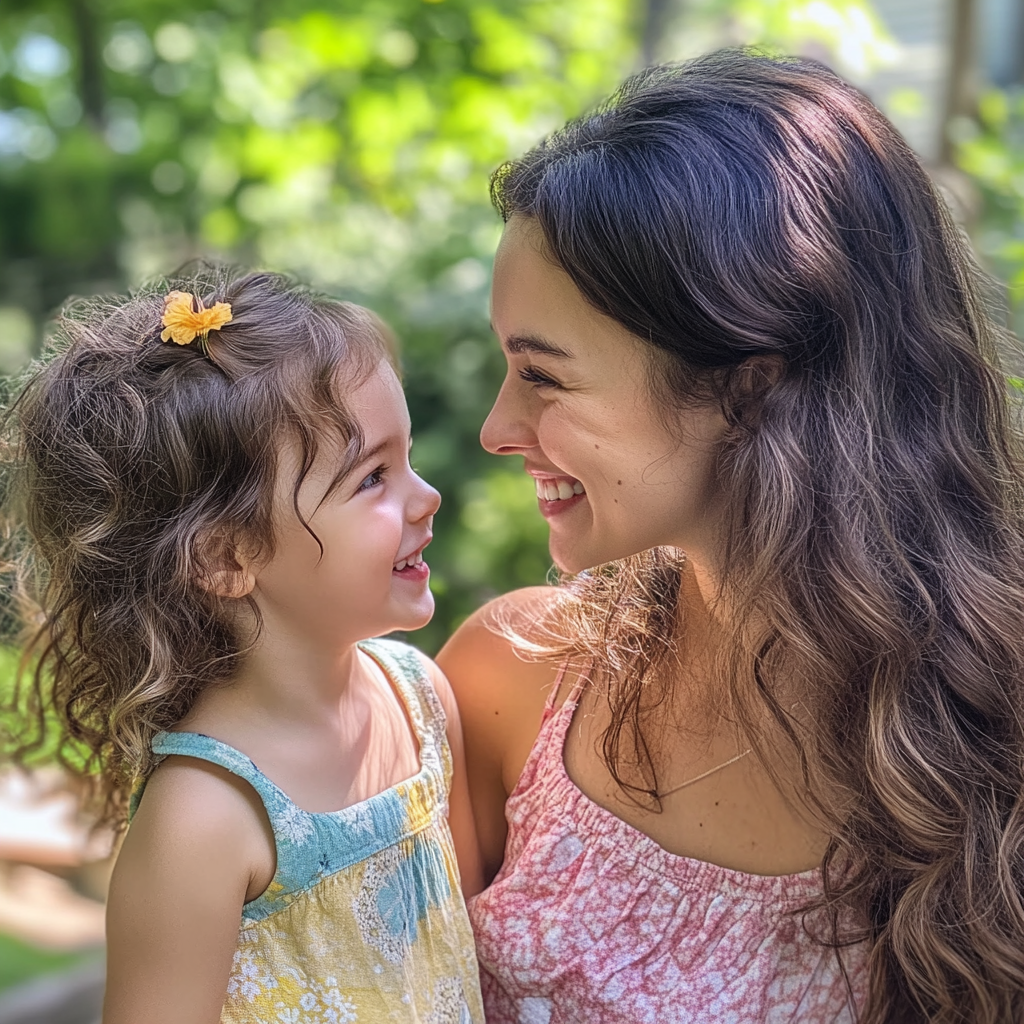
Uma mulher sorridente conversando com sua filha | Fonte: Midjourney
Ela não respondeu, apenas se enrolou um pouco mais forte sob os cobertores. Fiquei ali, segurando a mão dela, me perguntando de onde isso vinha. Ela poderia estar apenas nervosa? Talvez se ajustar fosse mais difícil para ela do que eu imaginava. Mas quando olhei para seu rosto pequeno e sério, um leve desconforto surgiu.
Quando finalmente saí do quarto dela, encontrei Richard esperando na porta. “Como ela foi?”, ele perguntou, seu rosto esperançoso.

Um homem sério | Fonte: Pexels
“Ela está dormindo”, respondi suavemente, observando sua expressão.
“Isso é bom.” Ele pareceu aliviado, mas notei como seu sorriso vacilou um pouco. “Eu sei que é tudo novo para ela. Para todos nós. Mas acho que ficaremos bem. Você não acha?”
Eu assenti, mas não consegui afastar a sensação das palavras de Jennifer ecoando em minha mente.

Uma mulher imersa em pensamentos | Fonte: Pexels
No dia seguinte, enquanto eu mexia o macarrão no fogão, ouvi a voz de Richard vindo da sala de estar. Ele estava ao telefone, seu tom baixo e tenso. Parei, limpando minhas mãos em uma toalha, e ouvi suas palavras flutuando para a cozinha.
“Tem sido… mais difícil do que eu esperava”, ele disse, sua voz quase um sussurro. “Ela é… esperta. Jennifer está percebendo mais do que eu pensava que ela perceberia. Tenho medo que ela conte para Marla.”
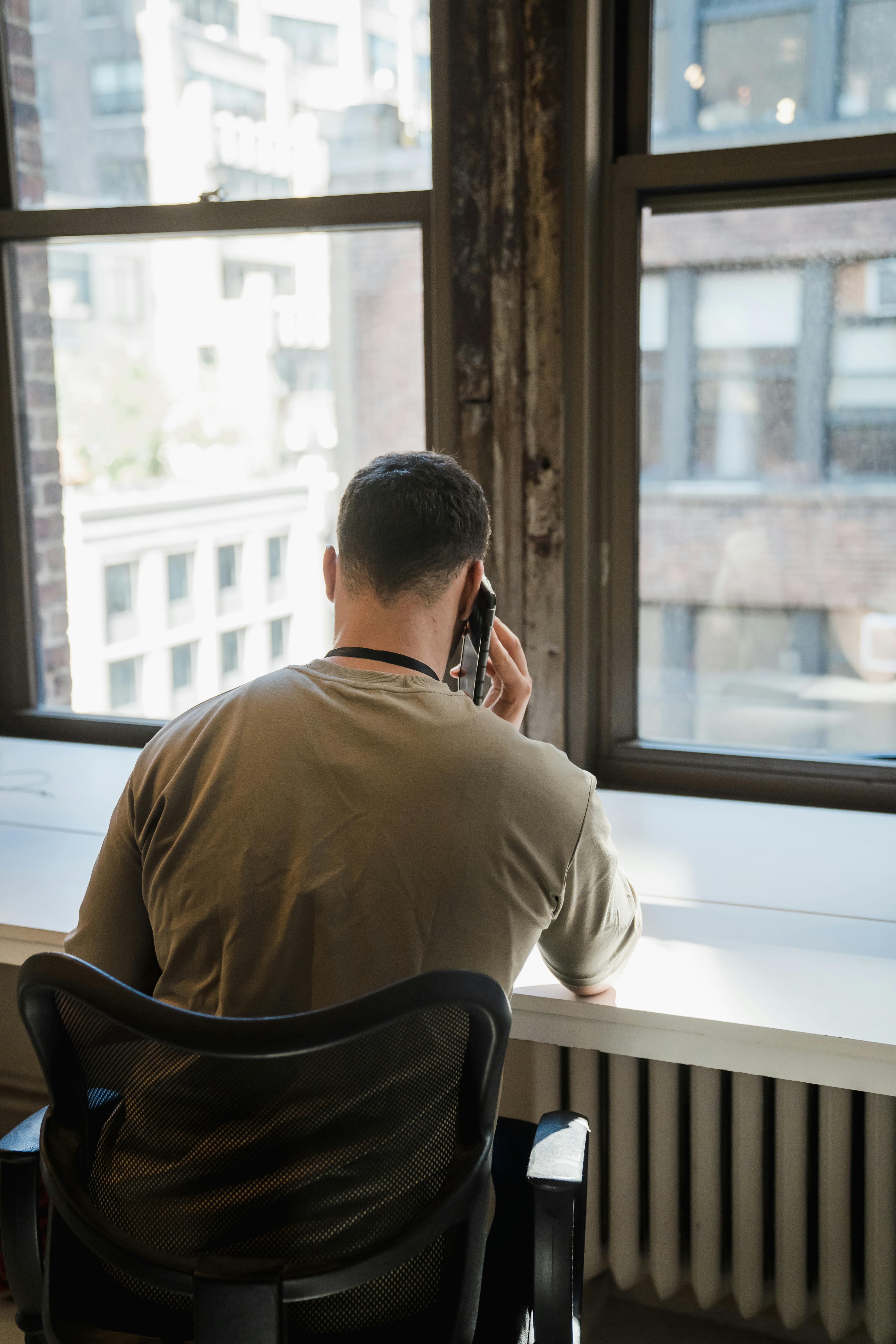
Um homem falando ao telefone de costas para a câmera | Fonte: Pexels
Senti meu coração acelerar, minha mente correndo para dar sentido ao que eu tinha ouvido. Jennifer poderia me contar ? Me contar o quê ? Tentei me livrar disso, dizendo a mim mesma que devia haver uma explicação. Mas enquanto eu ouvia, meu pulso só batia mais forte.
“É só que… tão difícil manter as coisas em segredo”, Richard continuou. “Não quero que Marla descubra… não até que esteja pronto.”

Uma mulher séria e suspeita | Fonte: Freepik
Eu congelei, agarrando o balcão. O que eu não deveria descobrir? O que ele poderia estar escondendo de mim? Eu me esforcei para ouvir, mas então sua voz ficou mais baixa, e eu não consegui entender o resto da conversa. Alguns momentos depois, ele encerrou a ligação e começou a andar em direção à cozinha.
Voltei-me para o fogão, minha mente girando. Mexi o macarrão com mais força do que o necessário, tentando agir normalmente enquanto Richard entrava, parecendo satisfeito.

Um homem sorridente olhando para sua esposa cozinhando | Fonte: Pexels
“O cheiro aqui é bom”, ele disse, me abraçando.
Forcei um sorriso, minhas mãos segurando a colher. “Obrigada. Quase pronto.” Minha voz soou estranha para meus próprios ouvidos, e senti meu sorriso vacilar enquanto suas palavras ecoavam em minha cabeça: Tenho medo que ela conte para Marla… É difícil manter as coisas em segredo.

Uma mulher cozinhando com um sorriso forçado | Fonte: Midjourney
Mais tarde naquela noite, depois de colocarmos Jennifer na cama, não consegui mais me segurar. Eu precisava de respostas. Encontrei Richard na sala de estar, folheando alguns papéis, e sentei-me em frente a ele, com as mãos firmemente entrelaçadas no meu colo.
“Richard”, comecei, minha voz mais firme do que me sentia, “ouvi você falando ao telefone mais cedo.”

Um casal tendo uma conversa séria | Fonte: Pexels
Ele olhou para cima, erguendo uma sobrancelha, uma mistura de surpresa e… algo mais cruzando seu rosto. “Oh?”, ele disse, claramente pego de surpresa. “O que você ouviu?”
Hesitei, escolhendo minhas palavras cuidadosamente. “Ouvi você dizer que Jennifer pode… me contar algo. E que é difícil manter as coisas ’em segredo’.” Encontrei seu olhar, meu coração batendo forte. “O que você está escondendo de mim?”

Uma mulher triste e séria abraçando os joelhos | Fonte: Pexels
Por um momento, ele apenas me encarou, seu rosto uma mistura de confusão e preocupação. Então, quando a compreensão surgiu, sua expressão se suavizou. Ele colocou seus papéis de lado e se inclinou para frente, pegando minha mão.
“Marla”, ele disse gentilmente, “não estou escondendo nada de ruim. Eu prometo.” Seu aperto na minha mão era quente, reconfortante, mas não aliviou os nós no meu estômago.

Um homem frustrado | Fonte: Pexels
“Então o que é?”, sussurrei, mal conseguindo encará-lo. “O que você não quer que Jennifer me diga?”
Richard respirou fundo, seu rosto se abrindo em um sorriso envergonhado. “Eu não queria que você descobrisse porque… bem, eu estava planejando uma surpresa para o aniversário de Jennifer. Com a ajuda do meu irmão.” Ele apertou minha mão, parecendo um pouco envergonhado. “Eu queria que fosse algo importante, um primeiro aniversário especial conosco.”

Um homem sério falando em seu sofá | Fonte: Midjourney
Pisquei, sem processar suas palavras a princípio. “Uma festa surpresa?”, perguntei lentamente, a tensão no meu peito diminuindo um pouco.
Ele assentiu. “Eu queria que fosse perfeito para ela. Pensei que poderíamos mostrar a ela o quanto nos importamos. Que ela é parte da nossa família agora.” Ele sorriu, parecendo um pouco aliviado. “Eu sabia que Jennifer poderia dizer algo, e fiquei preocupado que ela estragasse a surpresa.”

Uma festa surpresa para uma menina pequena | Fonte: Midjourney
Uma onda de alívio tomou conta de mim, embora eu sentisse uma estranha pontada de culpa. Aqui estava eu imaginando… bem, eu nem sabia o que estava imaginando. “Richard”, sussurrei, abaixando a cabeça, “sinto muito. Eu só… pensei que havia algo errado.”
Ele riu baixinho, passando o polegar na minha mão. “Ei, está tudo bem. Eu entendo. Nós dois estamos apenas tentando nos ajustar.”
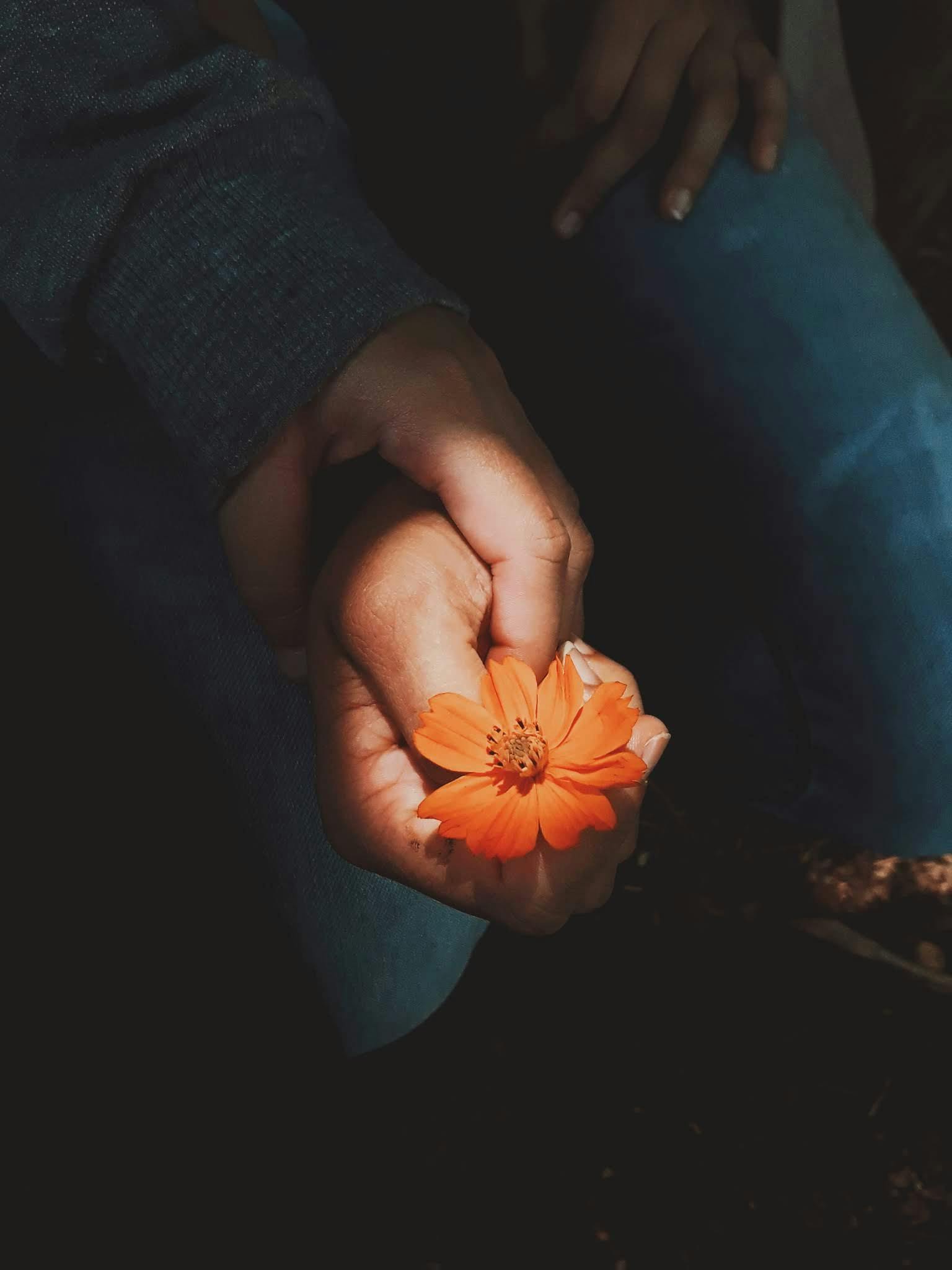
Homem e mulher de mãos dadas | Fonte: Pexels
Eu assenti, tentando me livrar das dúvidas que tinham tomado conta de mim. “Eu acho que Jennifer é apenas… protetora”, eu disse, tentando explicar. “Ela não sabe o que esperar, e quando ela me disse para não confiar em você… eu acho que isso simplesmente me pegou.”
Richard assentiu pensativamente. “Ela é uma criança sensível. Acho que ela ainda está encontrando seu caminho.” Ele olhou para mim, sua expressão séria. “Nós só teremos que garantir que ela se sinta segura e amada. Nós três.”

Um casal feliz conversando no sofá | Fonte: Midjourney
Na manhã seguinte, enquanto eu observava Richard gentilmente ajudar Jennifer a escolher seu cereal matinal, senti meu coração se animar um pouco. Ele olhou para ela com tanta paciência, e mesmo que ela mal olhasse para cima, eu podia ver a confiança lentamente crescendo entre eles.
Eu andei até eles e me juntei a eles na mesa, minha mão descansando no ombro de Jennifer. Ela olhou para mim, seus olhos calmos, e um pequeno sorriso surgiu em seu rosto. Era como se ela pudesse sentir a nova paz entre nós, como se alguma preocupação não dita finalmente tivesse se dissipado.
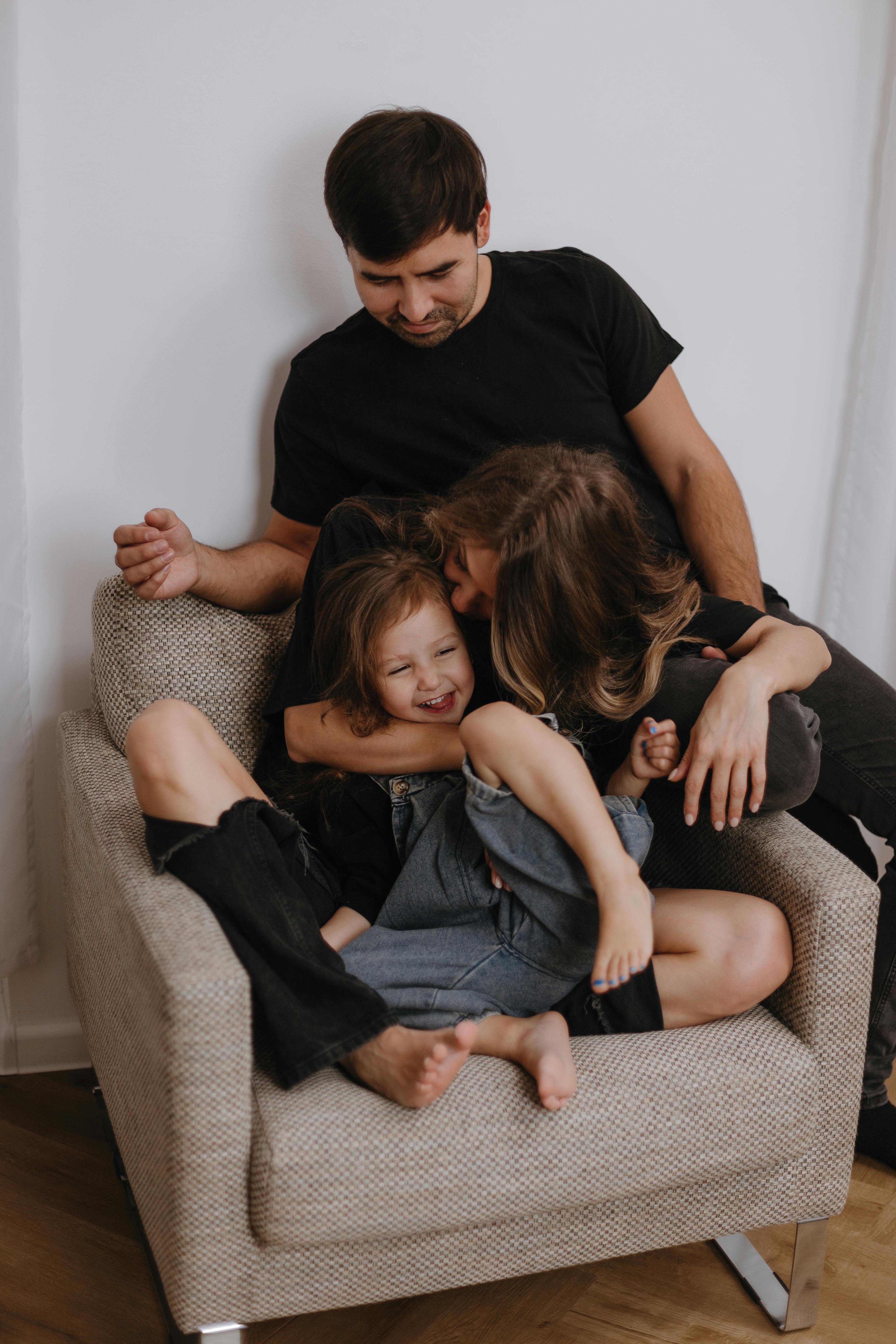
Uma família feliz brincando junta | Fonte: Pexels
Gostou desta história? Considere conferir esta : Chelsea e Peter estavam planejando o casamento dos sonhos quando tudo desmoronou de repente. Chelsea chegou em casa um dia e encontrou seus pertences embalados em malas e Peter desaparecido sem explicação. Enquanto ela tentava entender o que aconteceu, segredos chocantes e traições vieram à tona.
Este trabalho é inspirado em eventos e pessoas reais, mas foi ficcionalizado para fins criativos. Nomes, personagens e detalhes foram alterados para proteger a privacidade e melhorar a narrativa. Qualquer semelhança com pessoas reais, vivas ou mortas, ou eventos reais é mera coincidência e não intencional do autor.
O autor e a editora não fazem nenhuma reivindicação quanto à precisão dos eventos ou à representação dos personagens e não são responsáveis por nenhuma interpretação errônea. Esta história é fornecida “como está”, e quaisquer opiniões expressas são as dos personagens e não refletem as opiniões do autor ou da editora.



Leave a Reply